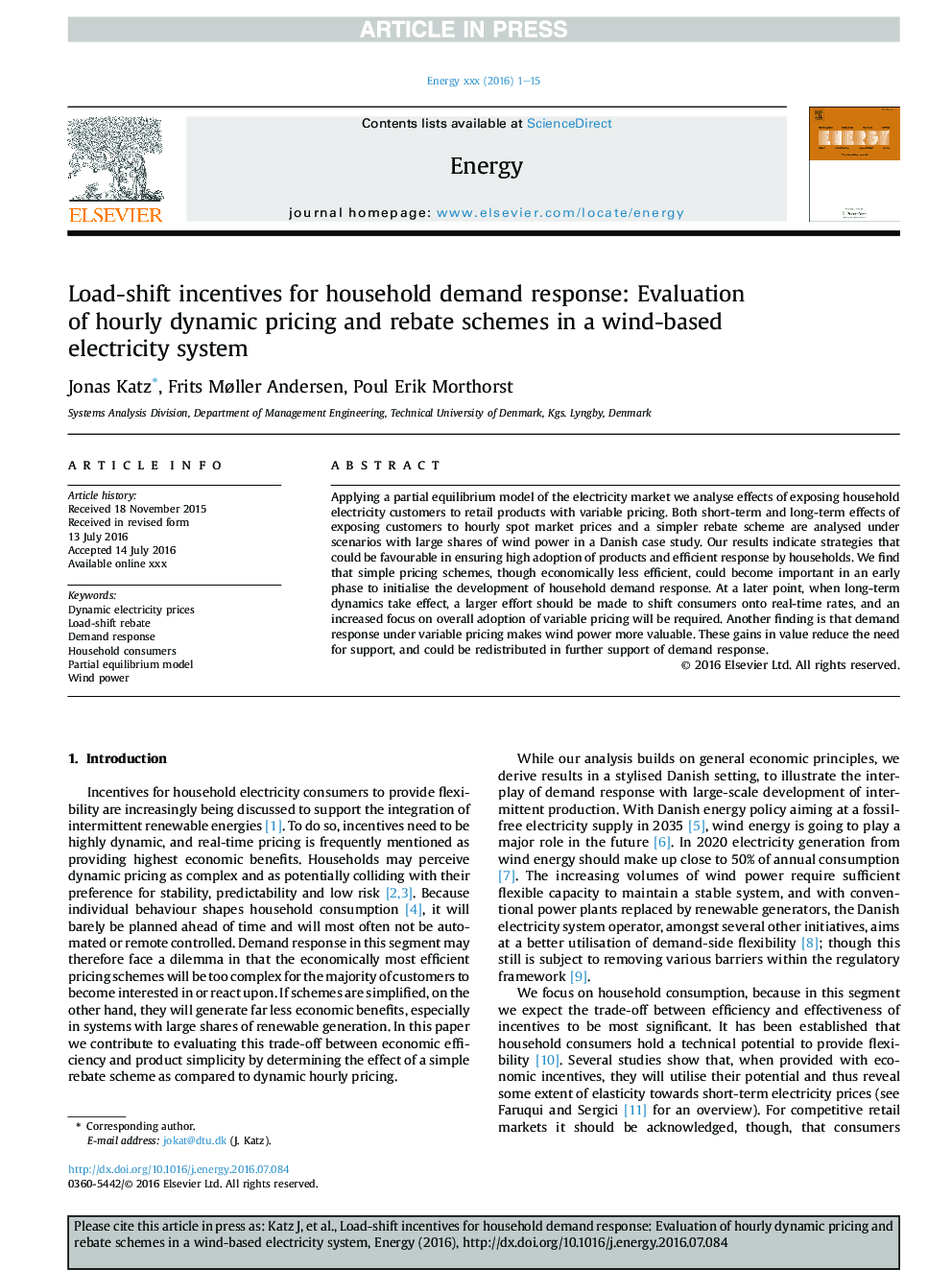| Article ID | Journal | Published Year | Pages | File Type |
|---|---|---|---|---|
| 5477245 | Energy | 2016 | 15 Pages |
Abstract
Applying a partial equilibrium model of the electricity market we analyse effects of exposing household electricity customers to retail products with variable pricing. Both short-term and long-term effects of exposing customers to hourly spot market prices and a simpler rebate scheme are analysed under scenarios with large shares of wind power in a Danish case study. Our results indicate strategies that could be favourable in ensuring high adoption of products and efficient response by households. We find that simple pricing schemes, though economically less efficient, could become important in an early phase to initialise the development of household demand response. At a later point, when long-term dynamics take effect, a larger effort should be made to shift consumers onto real-time rates, and an increased focus on overall adoption of variable pricing will be required. Another finding is that demand response under variable pricing makes wind power more valuable. These gains in value reduce the need for support, and could be redistributed in further support of demand response.
Related Topics
Physical Sciences and Engineering
Energy
Energy (General)
Authors
Jonas Katz, Frits Møller Andersen, Poul Erik Morthorst,
